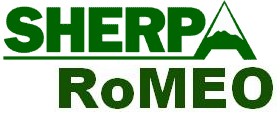THE EFFECT OF A READING COMPREHENSION SOFTWARE PROGRAM ON STUDENT ACHIEVEMENT IN MATHEMATICS
DOI:
https://doi.org/10.5937/IJCRSEE1601039PKeywords:
reading comprehension, mathematics, computer based instruction, problem solving, critical thinking, languageAbstract
In an effort to increase student achievement, research was conducted to determine the degree in which a reading comprehension software program effected the reading and math abilities of fourth and fifth grade students. Cognitive and educational studies were examined to select a reading comprehension software program as an intervention that would produce positive results in reading comprehension and possibly transfer positive results to achievement in other academic areas, specifically in math. The effects of the intervention were measured by assigning subjects to an experimental group. The total sample consisted of 39 students who were deficient in reading comprehension, and also exposed a significant weakness with word problem items on mathematical assessments. Four instruments were used to collect data before and after the treatment to measure student achievement. To determine the degree to which the software program effected student achievement, data from the four instruments were analyzed using SPSS software. A paired-samples dependent t test and a Pearson Product Moment Correlation Coefficient was computed with ratio level data to test for a correlation between increased math scores and reading comprehension scores. Results yielded statistically significant and positive results in increasing reading comprehension skills that could possibly benefit students in reading and understanding mathematical problems. Results did not conclusively support that the increase of reading-comprehension skills had a collateral effect on students scoring higher with math word problems. The results are conducive to providing insight to educational leaders who plan to implement software as a means for increasing student achievement.
Downloads
References
Adams, T. L. (2003). Reading mathematics: More than words can say. Reading Teacher, 56(8) 786-795.
Bialo, E.R., & Sivin-Kachala, J. (1996). The effectiveness of technology in schools: A summary of recent research. Washington, DC: Software Publishers Association.
Carnine, L., & Carnine, D. (2004). The interaction of reading skills and science content knowledge when teaching struggling secondary students. Reading & Writing Quarterly, 20(2), 203-218.
Crowe, L. K. (2005). Comparison of two oral reading feedback strategies in improving reading comprehension of school-age children with low reading ability. Remedial and Special Education, 26(1), 32-42.
Fuentes, P. (1998). Reading comprehension in mathematics. The Clearing House, 72(2), 81-88.
Graesser, A. C., Singer, M., & Trabasso, T. (1994). Constructing inferences during narrative text comprehension. Psychological review, 101(3), 371.
Hyde, A. (2007). Mathematics and cognition. Educational Leadership, 65(3), 43-47.
Jitendra, A., DiPipi, C. M., & Perron-Jones, N. (2002). An Exploratory Study of Schema-Based Word-Problem—Solving Instruction for Middle School Students with Learning Disabilities An Emphasis on Conceptual and Procedural Understanding. The Journal of Special Education, 36(1), 23-38.
Kulik, J. A. (1994). Meta-analytic studies of findings on computer-based instruction. Technology assessment in education and training, 1, 9-34.
Pany, D., & McCoy, K. M. (1988). Effects of corrective feedback on word accuracy and reading comprehension of readers with learning disabilities. Journal of Learning Disabilities, 21(9), 546-550.
Polya, G. (1945). How to Solve It. Princeton University Press. Princeton, NJ.
Sasser, J. E. (1991). The effect of using computer tutorials as homework assignments on the mathematics achievement of elementary education majors. Journal of Computers in Mathematics and Science Teaching, 10(2), 95-102.
Shany, M. T., & Biemiller, A. (1995). Assisted reading practice: Effects on performance for poor readers in grades 3 and 4. Reading research quarterly, 382-395.
Steele, M. M., & Steele, J. W. (1999). DISCOVER: An intelligent tutoring system for teaching students with learning difficulties to solve word problems. Journal of Computers in Mathematics and Science Teaching, 18(4), 351-359.
Vygotsky, L. S. (1978). Mind in society: The development of higher psychological processes. Cambridge, MA: Harvard University Press.
Vygotsky, L. S. (1987). Thinking and speech. In R.W. Rieber & A.S. Carton (Eds.), The collected works of L.S. Vygotsky, Volume 1: Problems of general psychology (pp. 39–285). New York: Plenum Press. (Original work published 1934.)
Watson, J. (2001). How to Determine a Sample Size: Tipsheet# 60, University Park, PA: Penn State Cooperative Extension. Retrieved on, 21(10), 2012. Retrieved from http://www.extension.psu.edu/evaluation/pdf/TS60.pdf
Winsler, A., Abar, B., Feder, M. A., Schunn, C. D., & Rubio, D. A. (2007). Private speech and executive functioning among high-functioning children with autistic spectrum disorders. Journal of Autism and Developmental Disorders, 37(9), 1617-1635.
Published
How to Cite
Issue
Section
License
Copyright (c) 2016

This work is licensed under a Creative Commons Attribution-NonCommercial-NoDerivatives 4.0 International License.



























